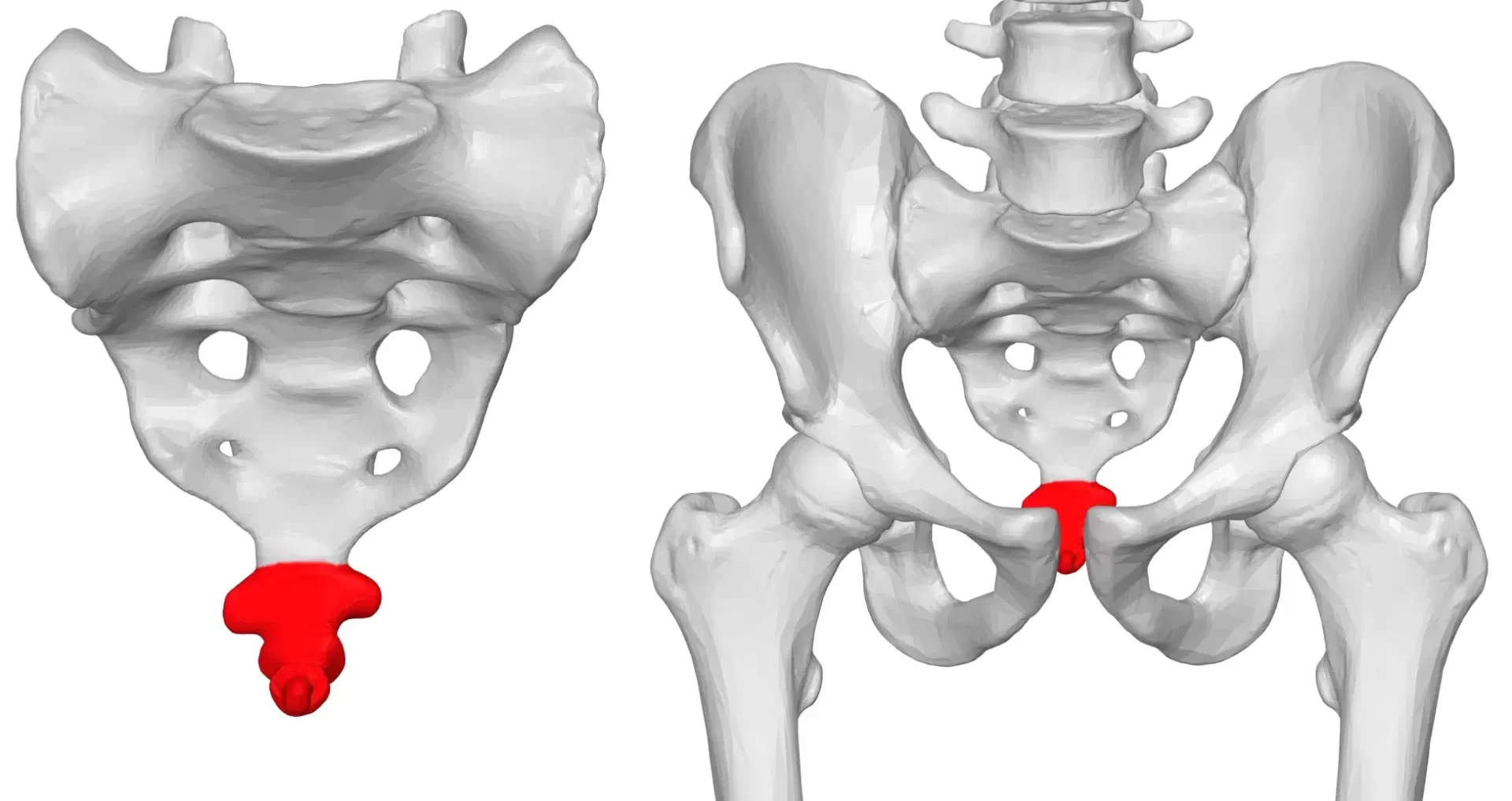Coccydynia, commonly referred to as tailbone pain, can be an incredibly discomforting condition that affects the coccyx, the small triangular bone at the base of the spine. It can result from various causes, including trauma such as difficult childbirth, or simply prolonged sitting. While coccydynia can be painful and disrupt daily life, the good news is that pelvic physiotherapy offers effective management strategies to alleviate the pain and improve your quality of life.
Understanding Coccydynia:
Coccydynia typically presents as a sharp, localized pain in the tailbone area. The pain can be exacerbated by sitting, standing up from a seated position, or any activity that puts pressure on the coccyx. Common causes of coccydynia include:
- Trauma: Falls or direct trauma to the tailbone, such as during sports or road accidents, can lead to coccyx pain.
- Childbirth: Injury to the coccyx can occur during childbirth, particularly in cases involving a difficult delivery or the use of forceps.
- Prolonged Sitting: People who sit for extended periods, especially on hard surfaces or with poor posture, may develop coccydynia over time.
- Infections or Tumors: While less common, infections or tumors in the tailbone area can cause pain.
Pelvic Physiotherapy Management:
Pelvic physiotherapy is a non-invasive and highly effective approach to managing coccydynia. A skilled pelvic Range physiotherapist can work with you to alleviate pain, improve mobility, and enhance your overall quality of life. Here is how pelvic physiotherapy can help:
- Comprehensive Assessment: The first step is a thorough assessment to identify the underlying causes and triggers of your coccyx pain. Your physiotherapist will consider factors such as your medical history, posture, and any recent trauma.
- Tailored Treatment Plan: Based on the assessment findings, your Range physiotherapist will create an individualized treatment plan to address your specific needs and goals. This may include techniques to reduce pain and inflammation.
- Manual Therapy: Hands-on techniques, such as myofascial release and joint mobilization, can help alleviate muscle tension and improve mobility in the coccyx area. These therapies can provide significant relief from pain.
- Pelvic Floor Muscle Assessment: The pelvic floor muscles are closely connected to the coccyx area. A pelvic physiotherapist will assess these muscles for tension and dysfunction, which can contribute to coccydynia.
- Pelvic Floor Relaxation Techniques: If the pelvic floor muscles are found to be tight or overactive, relaxation techniques can be taught to release the tension and reduce pressure on the coccyx.
- Posture Correction: Many cases of coccydynia are aggravated by poor posture. Your physiotherapist will provide guidance on maintaining proper posture to minimize pain.
- Exercise Prescription: Specific exercises targeting the pelvic floor and surrounding muscles may be prescribed to strengthen and stabilize the area. Strengthening these muscles can provide better support for the coccyx.
- Pain Management Strategies: Techniques like heat and cold therapy, as well as advice on modifying daily activities, can be provided to manage and alleviate pain.
- Education: Your Range physiotherapist will advise you on self-care strategies, including proper sitting techniques and the use of cushions or supports to reduce coccyx pressure.
- Lifestyle Modifications: If necessary, your physiotherapist will discuss lifestyle changes that can help prevent future episodes of coccydynia. This may include recommendations for ergonomic workstations or adjustments to your daily routine.
Coccydynia can be a challenging condition, but with the guidance of a Range physiotherapist, you can effectively manage and alleviate tailbone pain. Pelvic physiotherapy offers a holistic approach, addressing the root causes of coccydynia and providing targeted interventions to improve your comfort and mobility. By working closely with a Range physiotherapist, you can experience relief from coccyx pain and regain control over your daily activities.


